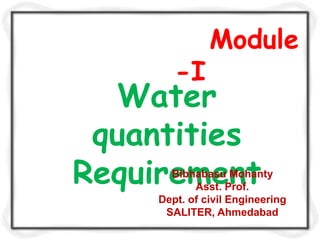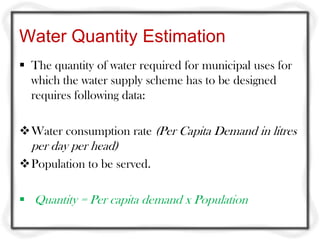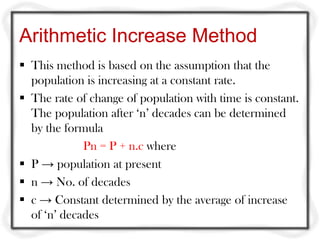The document discusses factors that affect estimating water quantity requirements for a municipality. It outlines that water quantity is calculated using per capita demand and population served. Per capita demand can vary significantly based on climate, industry, economic status and more. The document then examines different types of water demands and factors like losses, fluctuations, design periods, and population forecasting methods used to estimate future water quantity needs.
































